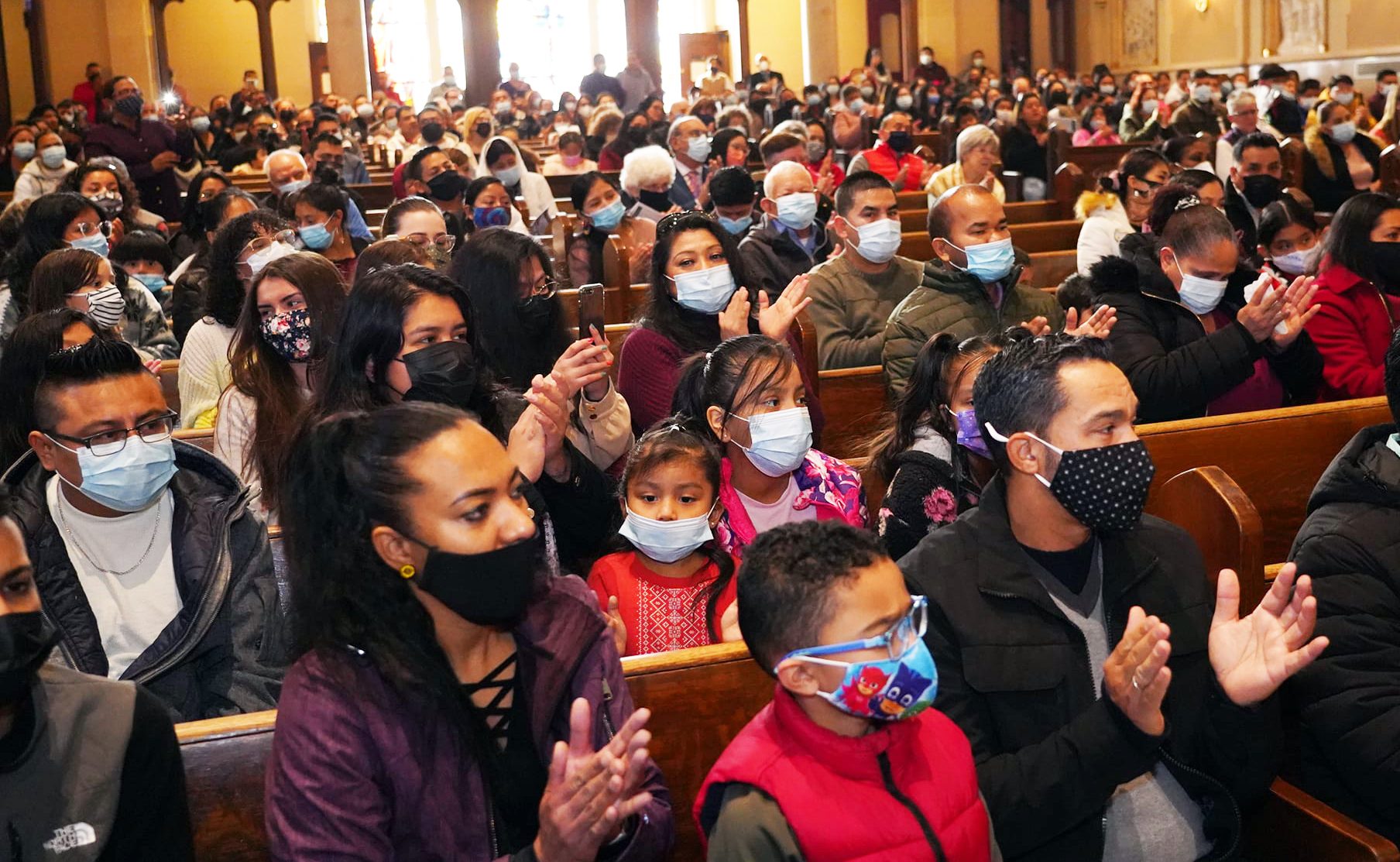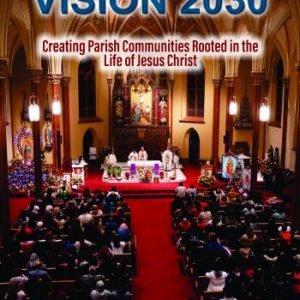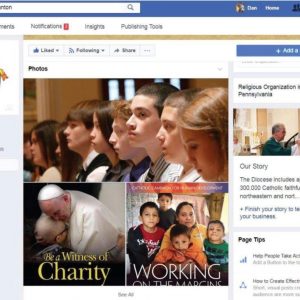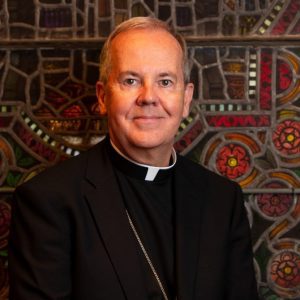What is the Vision 2030 Blueprint Process?
The Vision 2030 Blueprint Planning Process is a long-range pastoral planning process for the Diocese of Scranton. While looking proactively at the realities of our local church in the present moment, this process strives to meet the opportunities and challenges of the coming decade in order to create vibrant expressions of parish life rooted in the life of Jesus Christ.
Prayer for Vision 2030
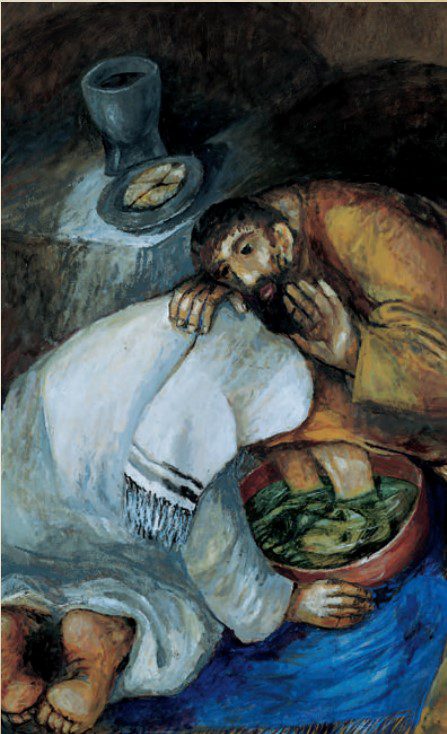
Loving God,
From our baptism, you call us to be missionary disciples,
imitating the servant leadership of your son, Jesus Christ.
We witness your creation in every moment of our lives:
in our worship, in our work, in our families, and in our communities.
Your presence with us continues to unfold.
Help us to see with new eyes the coming of Your Kingdom.
In these challenging days ahead,
May we listen deeply for your daily invitation to share our talents with creativity.
May we generously serve your people as courageous leaders and compassionate neighbors.
May we open our hearts to you as we discover new opportunities to faithfully proclaim the gospel, joyfully celebrate the sacraments together, and boldly strive for life, justice and peace.
With the help of your grace, trusting the wisdom of the Holy Spirit,
and rooting ourselves in the life, death and resurrection of your son, Jesus Christ,
we look forward with hope as we build a vibrant Church,
and spread the good news to all the world.
Amen.
Frequently Asked Questions
WHAT IS THE VISION 2030 BLUEPRINT PLANNING PROCESS? The Vision 2030 Blueprint Planning Process is a long-range pastoral planning process for the Diocese of Scranton. While looking proactively as the realities of our local church in the present moment, this process strives to meet the opportunities and challenges of the coming decade in order to create vibrant expressions of parish life rooted in the life of Jesus Christ.
WHY IS VISION 2030 HAPPENING NOW? Change is constantly occurring all around us in society. From school districts that have consolidated because of population swings to hospitals that have closed because of shifts in demographics, our parishes are also not immune to change. We all have a responsibility to make the best use of the resources that God has given to us to fulfill the mission of the Church. The challenges and opportunities facing the Diocese of Scranton are not unique but they are becoming more urgent by the day. Many other dioceses are responding to similar circumstances, particularly in the northeastern part of the country. Many times the resources of a parish, or the diocese itself, are utilized to maintain the “status quo.” This process is truly about working to strengthen all aspects of parish life, with the emphasis on “mission” over “maintenance.”
WHO IS INVOLVED IN VISION 2030? Everyone. That includes the laity, clergy and religious of the Diocese of Scranton. By the essence of our Baptism, each one of us must take an active role in realizing the mission of the Vision 2030 Blueprint Process. We are all co-responsible for the success of this mission. There must be equal participation and dialogue from all sides as this process moves forward. By being informed and relying on data, not simply emotion or sentimentality, we can all work together to create vibrant parish communities rooted in the life of Jesus Christ.
HOW IS VISION 2030 DIFFERENT FROM PREVIOUS PLANNING PROCESSES? More than a decade ago, the Diocese of Scranton was involved in a pastoral planning process known as Called to Holiness & Mission, which altered the landscape of parishes dramatically, from 196 parishes down to 120, affecting all parishes in the process at that time. While building upon that initiative, Vision 2030 will be significantly different. Not every parish will be engaged in the process at the same time. Different things will prompt necessary changes in our parishes at different times in different places. While priority drivers will vary from parish to parish, the overall mission of Vision 2030 will remain the same – to ensure that we can continue to proclaim the Gospel faithfully and celebrate the sacraments joyfully throughout all areas of the Diocese of Scranton.
WHAT ARE SOME OF THE PRIORITY DRIVERS THAT MIGHT LEAD TO CHANGE? A lot has changed not only in society, but also in the Diocese of Scranton during its more than 150-year history. By working together, we hope to strengthen the most vibrant expressions of parish life and to embrace the unavoidable changes that require us to respond in new ways. Long before the COVID-19 pandemic impacted parishes, regular weekend Mass attendance had been on the decline. The total number of parishioners who were registered in all parishes of the Diocese of Scranton dropped by more than 16% between 2014 and 2020. The total number of Baptisms, First Communions and Confirmations also dropped during this time. Many parish buildings were built in a different era and there are countless facilities with deferred maintenance needs and no planned funding stream for necessary repairs. The Diocese of Scranton must continue to evaluate where and how to best invest resources not only a particular parish-level, but also the deanery and diocesan levels. Parishes are more expensive to maintain now than they were in the past. With a fewer number of parishioners supporting the mission of the church overall, some parish offertories are not able to keep up with current realities. Over the coming decade and beyond, the Diocese of Scranton faces a decreasing number of priests. A fewer number of priests will represent a significant challenge to the entire diocese. In 2003, the Diocese of Scranton had more than 200 active priests. In 2021, there were 97 diocesan priests active in the Diocese and 16 of those priests are expected to reach retirement age by 2025 and 19 additional priests are projected for retirement between 2025-2030.
HOW CAN LAY PEOPLE BE INVOLVED IN VISION 2030? The lay faithful and clergy should strive to form vibrant and faith-filled parish families guided by our common witness to the Lord Jesus Christ. The parish is where most Catholics publicly express their faith, joining with others to give proof to their communion with God and with one another. Statistics show there is a tremendous opportunity for evangelization and creating the invitation for people to participate in the Catholic faith and parish life. The laity can help spread the Gospel message daily in their homes, workplaces and communities. The laity can also help to cultivate a more welcoming, hospitable environment in their parishes, with a sense of belonging throughout the parish family to encourage more active participation. The clergy and lay faithful should also aspire to give special attention to our youth and young families, enabling them to meet the unique challenges of our modern world.
WHAT ROLE DOES PROMOTING VOCATIONS TO THE PRIESTHOOD PLAY IN VISION 2030? The clergy and lay faithful must be dedicated to promoting vocations to the priesthood, diaconate and consecrated life through prayer and education and to renewing our prayers and support for those who are considering one of these particular vocations. As a diocese, pastoral care of vocations should shape our activities and be at the heart of diocesan pastoral planning. Parishes can help to create a culture of vocations by intentionally focusing on increasing vocations and encouraging individual young men to consider serving the Lord and His people as a priest. Parishes should also celebrate and promote the recruitment of seminarians.
WILL CHURCHES CLOSE AS A RESULT OF VISION 2030? Given the decreasing number of parishioners who are practicing their faith, good stewardship calls for the responsible and repeated evaluation of all parishes and facilities throughout the Diocese of Scranton. Different things will prompt change in our parishes at different times in different places. Implementation will be approached gradually as needs arise. There cannot be a “one size fits all approach.” Much of the planning process will be undertaken at the deanery level, which will allow the unique needs of each community to be addressed. In order to keep the mission of the Gospel alive throughout all 11 counties of the Diocese of Scranton, change in one area may be prompted by the overall needs of the diocese as well. The goal of any change will be to have a vibrant parish in as close proximity to our people as possible. The current footprint of parishes will need adjustment and that might mean change in your community. More often than not, changes in the Church have resulted in a reawakening and vibrancy of the faith. Christ’s Church continues to evolve and He promises it will be here when He returns, but it will look different from generation to generation. Throughout the process of any change, the faithful are encouraged to stay involved, informed, open-minded and remain focused on the Gospel and serving one another.
WHAT TYPES OF CHANGES COULD OCCUR IN PARISHES AS A PART OF VISION 2030? While change to parish life and structure will be necessary during this process, Vision 2030 will allow for the unique needs of each deanery and even special circumstances within each deanery, to be brought forward. While any change prompted by this process may be difficult, Vision 2030 aims to help all of the faithful grow more deeply in the faith. Some of the possible areas for discussion and pastoral planning that may occur in parishes over the next decade include: Parishes retain their own pastors but begin partnering with others to share ministries and resources such as the Rite of Christian Initiation of Adults, youth groups and religious education with the goal to avoid duplication as much as possible. Linking two or more parishes would involve the parishes sharing the same pastor. Such parishes, while independent, will by necessity cooperate more closely than parishes in partnerships. Linked parishes do many things cooperatively, such as programs, and are encouraged to work toward combining Pastoral Council meetings and establishing common committees where possible. The Diocese of Scranton currently has several Parish Life Coordinators who are entrusted with the responsibility of leading a parish community in the absence of a priest serving as pastor. The Parish Life Coordinator provides pastoral and organizational leadership for a parish community and works with a Sacramental Minister, who is a priest authorized to provide for the liturgical and sacramental needs of the parish community. In a parish merger, two or more parishes are united as one parish. Parishes may be considered for a merger when one or more of the parishes involved appears to lack the resources for long-term sustainability. This lack of resources might be financial in nature but might also apply to the number of active parishioners or the ability to maintain a safe and secure facility/property. This option is most generally considered when the membership of a parish has so diminished that the community is unable to sustain the pillars of parish life in Word, Worship, Community and Service and/or financial and infrastructure needs cannot be met.

